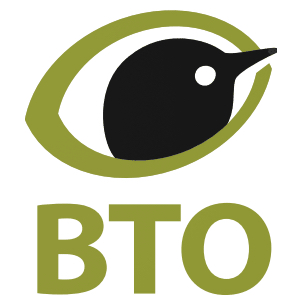Noisy and gregarious, a flock of house sparrows is sure to warm anyone's heart, especially in the light of their long-term decline. England’s house sparrow population fell by 70% between 1977 and 2016, and have declined in gardens since BTO Garden BirdWatch began. Although reasons behind this decline are not known, the availability of food and nest sites in urban areas is thought to be a significant contributing factor, and one study showed that 74% of the house sparrows tested in London carried avian malaria. Learn about this little bird in our expert guide by the British Trust for Ornithology (BTO).
Where are house sparrows found?
The native range of house sparrows is across Europe, parts of Asia and northern Africa. It has also been introduced to a number of countries in the Americas, sub-Saharan Africa and Oceania.
It is found across most of the UK, but is absent from parts of the Scottish Highlands.
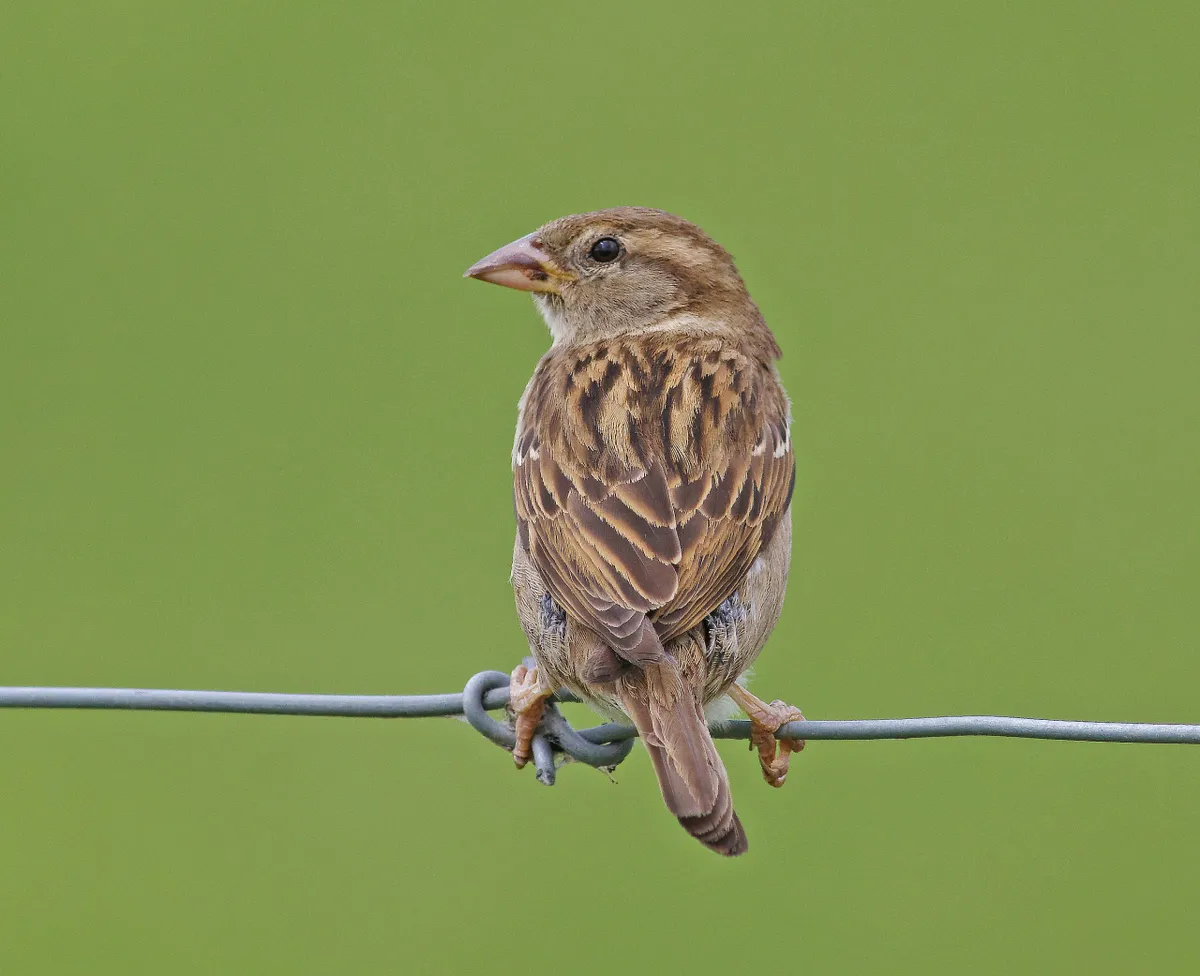
What is the scientific name of the house sparrow?
The scientific name of the house sparrow is Passer domesticus.
In the UK, the only other resident member of the Passer genus is the tree sparrow (Passer montanus). Although the dunnock (Prunella modularis) is sometimes known as the hedge sparrow, it is actually part of the Accentor group, in the Prunellidae family.
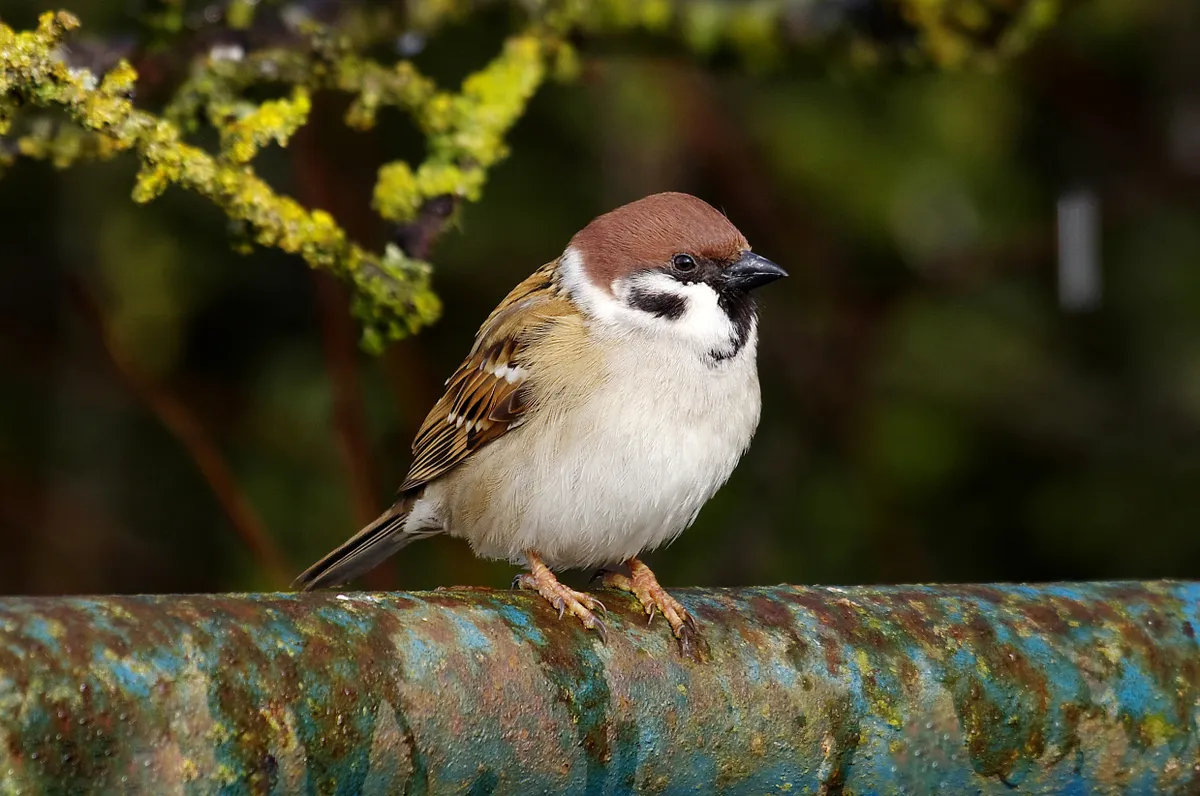
House sparrow, Passer domesticus fact file
- Length 14–15cm
- Wingspan 21–25cm
- Weight 25–30g
- Appearance: Male has warm brown upperparts streaked with black, dusky grey underparts, a neat grey nape and an untidy black bib; female and juvenile are much duller.
- Diet: Grain and seeds, supplemented with insects in the breeding season. Urban birds eat mostly scraps.
- Life cycle: Mates for life; pairs breed separately or in colonies. Female lays 4–5 eggs and incubates them for 11–14 days; the young fledge after 14–16 days.
- Habitat : Almost invariably artificial environments, including towns, cities and farmland.
- Lifespan: Typically up to three years.
- Status Abundant, but numbers have fallen in Britain where it is on the Red List of species of conservation concern.
How to identify house sparrows
Male house sparrows have a black bib, black face mask and a chestnut brown head with a grey crown. They also have a broad white wing bar.
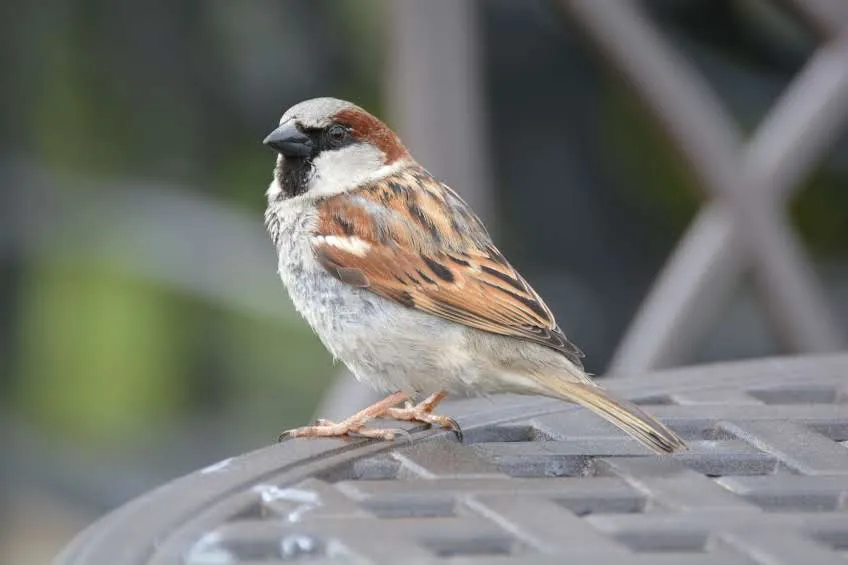
Female and juvenile house sparrows are dusky brown with greyish-white undersides and dull-brown, but streaked backs. They lack the black bib of the male and have pale brown crowns with a buff line above the eye.
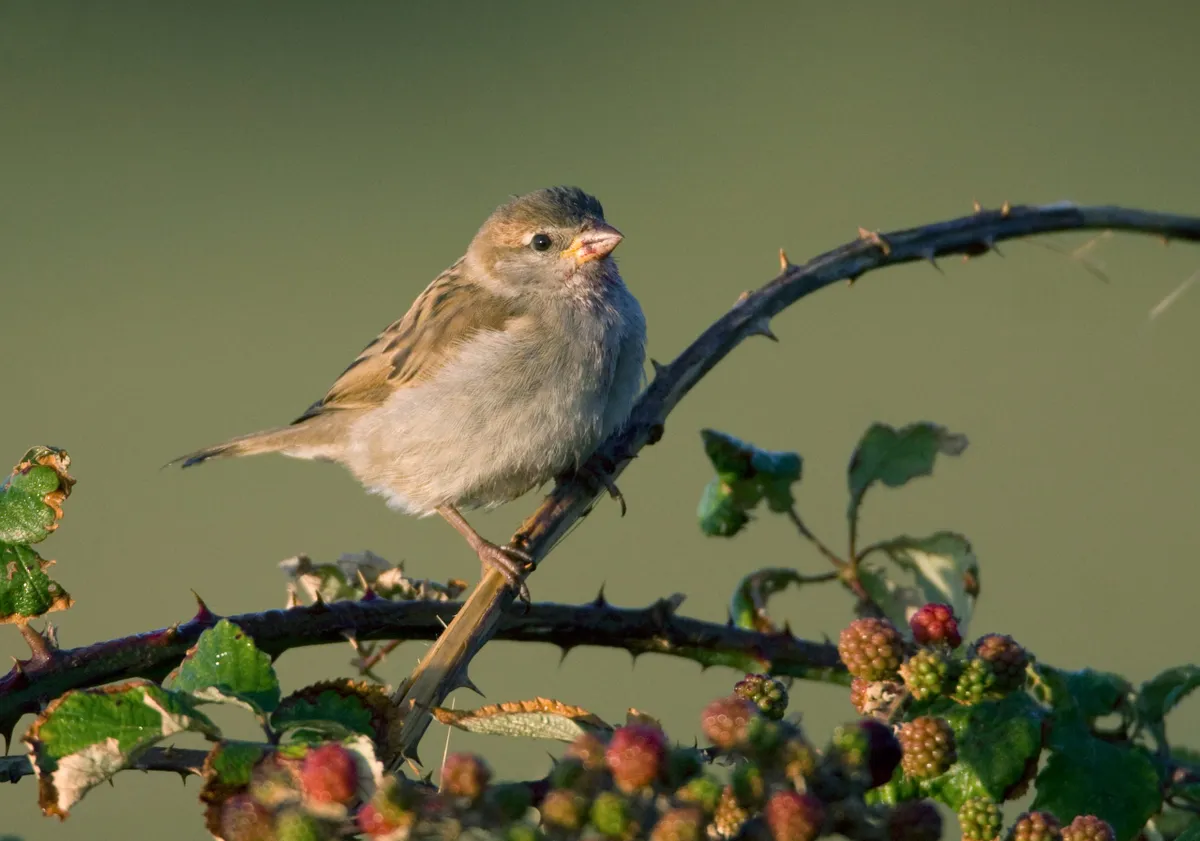
Please note that external videos may contain ads:
Identifying sparrows and similar-looking birds. © BTO
What do house sparrows sound like?
The loud, chirping calls of house sparrows are very distinctive and can carry a long way.
Please note that external videos may contain ads:
#BirdSongBasics - House sparrow and dunnock. © BTO
What do house sparrows eat?
House sparrows mainly eat seeds, but also shoots, berries and scraps. Nestlings are fed on invertebrates.
What predators do house sparrows have in gardens?
As with many garden birds, the house sparrow’s main predator is the sparrowhawk. However, house sparrows have some useful adaptations in order to evade sparrowhawks.
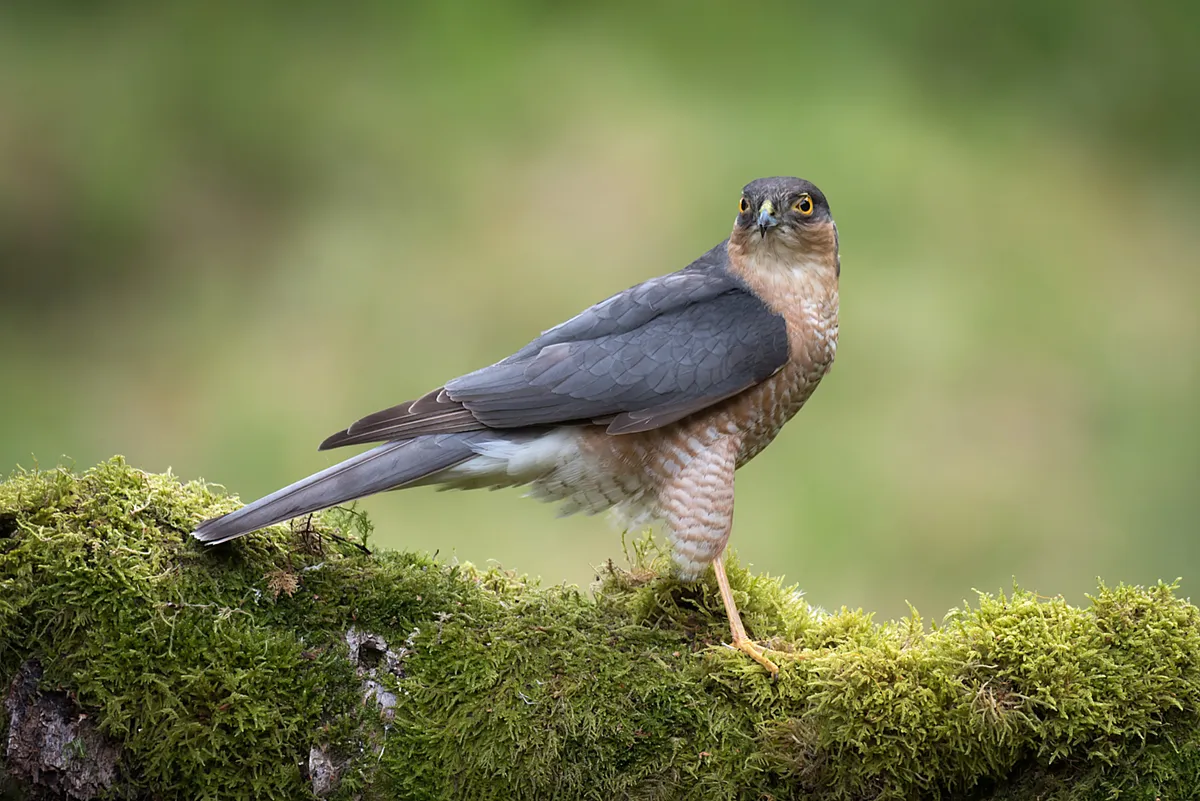
House sparrows put on more fat in places where there are no sparrowhawks. So where they need to escape from sparrowhawks, they stay lighter, more manoeuvrable and so are more vulnerable to starvation. Find out more about this study.
House sparrows are also predated by other birds, such as tawny owls.
Please note that external videos may contain ads:
Female tawny owl about to feed on a house sparrow. © BTO
How numerous are house sparrows?
The last population estimate of house sparrows was undertaken in 2016. It showed that there were 5.2 million pairs in Britain and 5.3 million in the UK.
How long do house sparrows live for?
Typically, house sparrows live for around three years. However, the current longevity for record for this species is 12 years and 12 days old.
How do house sparrows mate?
House sparrows mate for life, like many bird species. But they are fairly unusual in that the male and female live in each other’s pockets all year round. This model of stability is echoed in their wider social life.
Each pair lives within a loose colony of, say, 10–20 birds, and all of the pairs and unattached members of the colony know each other well and undertake many of life’s chores – foraging, preening, dust-bathing and roosting – together.
It is an unusually intimate existence and seems blissful – from the outside. Sparrow pairs work well together. The male builds most of the nest and defends a small territory around it, his mate incubates the eggs and broods their chicks, and both parents feed the hungry offspring.
But this is only half of the story. The colony offers countless opportunities for secret liaisons. Far from being random encounters, these affairs are carefully plotted – but more of that later.
Is it normal for house sparrow bibs to vary?
Yes – the black ‘bibs’ sported by the males do vary in size. Researchers have found that bib size is linked to social status, age and sexual behaviour. Males with larger bibs obtain mates earlier in the breeding season, copulate more frequently and engage in a greater number of extra-pair copulations (matings with females that are not their partner). Their breeding territories have a bigger proportion of breeding sites, and they participate more often in communal displays.
Since female house sparrows actively select males with larger bibs, size does seem to provide an honest signal of quality, though there is still uncertainty over which aspects exactly. Investing in the black (melanin-based) plumage carries a cost for the male, so males that can afford to cover this outgoing are perhaps signalling that they are more fertile or will father better quality offspring.
Smaller-bibbed males end up occupying poorer quality territories and may be forced to feed in riskier locations than their larger-bibbed rivals, who dominate the best sites.
When are house sparrows most frequently seen in gardens?
According to BTO Garden BirdWatch data, which has been collected since 1995, house sparrows are most frequently seen during June, in around 77% of gardens.
Average monthly maximum count data, which has been collected since 2003, has shown that the highest monthly counts tend to occur in August, with an average maximum monthly count of 6.7 birds per garden.
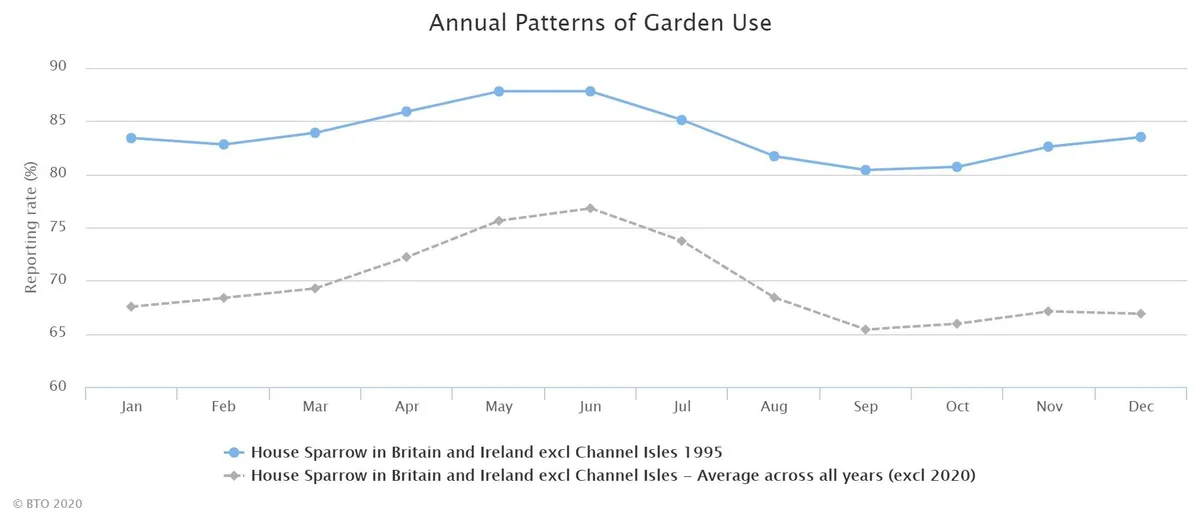
Are house sparrows increasing or declining in gardens?
House sparrows have declined in gardens since BTO Garden BirdWatch began. Although reasons behind this decline are not known, the availability of food and nest sites in urban areas is thought to be a significant contributing factor.

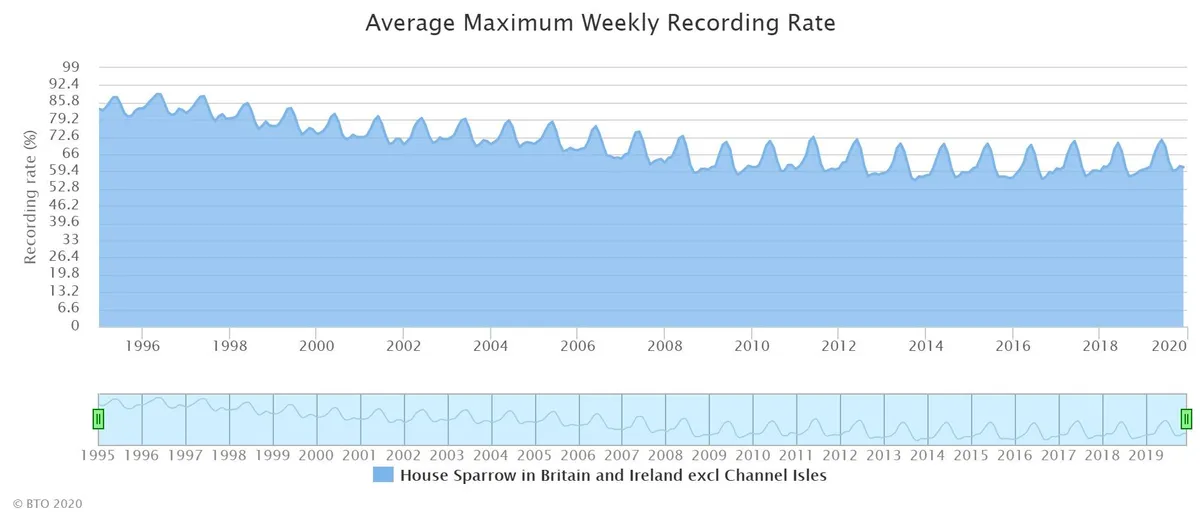
England’s house sparrow population fell by 70% between 1977 and 2016. A study that was led by ZSL's Institute of Zoology in collaboration with RSPB and BTO monitored the house sparrow population in London. The study showed that 74% of the house sparrows tested carried avian malaria, which is the highest prevalence recorded in populations of wild birds in Northern Europe.
When do house sparrows nest?
House sparrows nest from April to August, and have up to three broods a year. The breeding behaviour of this species has been well studied over the years and recent DNA studies have shown that up to 15% of house sparrows are the result of copulations by both males and females with others’ partners.

Also, widowed female house sparrows have been known to destroy eggs and young of other house sparrow pairs in an attempt to force the male of that pair to desert their current partner.
Do house sparrows use nestboxes?
Yes. House sparrows require a standard, small hole fronted nestbox with an entrance hole of 32 mm. As house sparrows are colonial nesters, consider placing several boxes in close proximity.
Nestboxes are best facing north-east and are sheltered from the prevailing wind and rain. Avoid obvious sun traps, such as south-facing walls. The boxes don’t need to be positioned within cover. The box is best positioned between two and three metres off the ground or higher if you think there is a risk of disturbance.
Download plan for a house sparrow nestbox from the BTO website.
What can I do to help house sparrows in my garden?
Provide bird feeders filled with seed and put up nestboxes for them. Although house sparrows tend to bathe in dust rather than water, make sure you supply a source of clean water (such as a bird bath) for them so that they can drink.
Also ensure that any bird feeders that you put up in your garden are cleaned and disinfected regularly in order to minimise the risk of the diseases that affect garden birds spreading.
The British Trust for Ornithology (BTO) is a UK charity that focuses on understanding birds and, in particular, how and why bird populations are changing. Our vision is of a world where people are inspired by birds and informed by science.
Main image: Male house sparrow. © Edmund Fellowes/BTO
